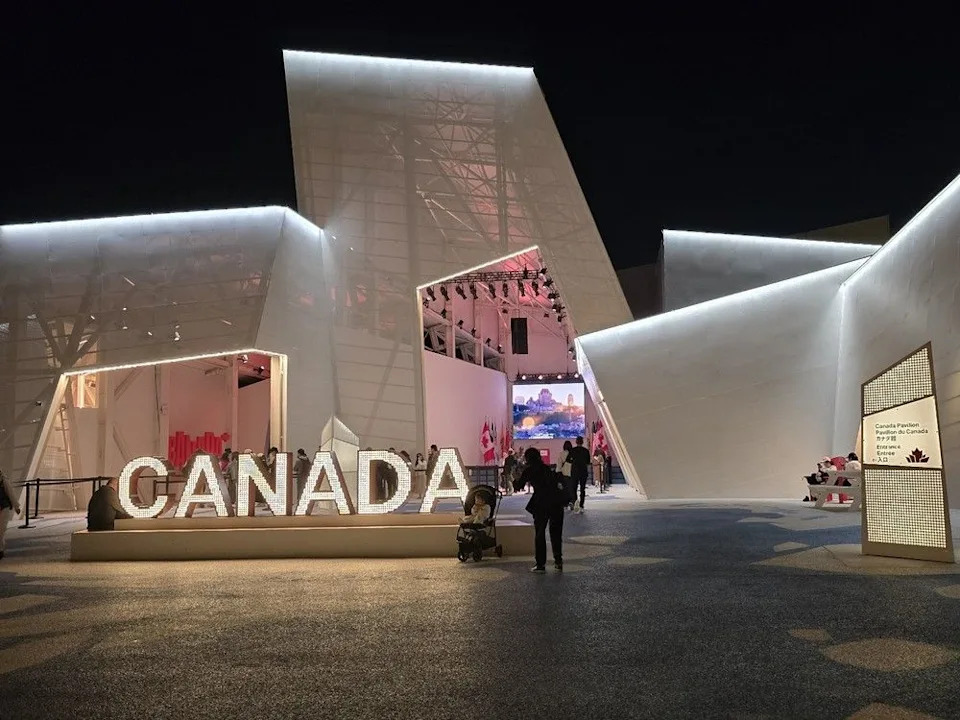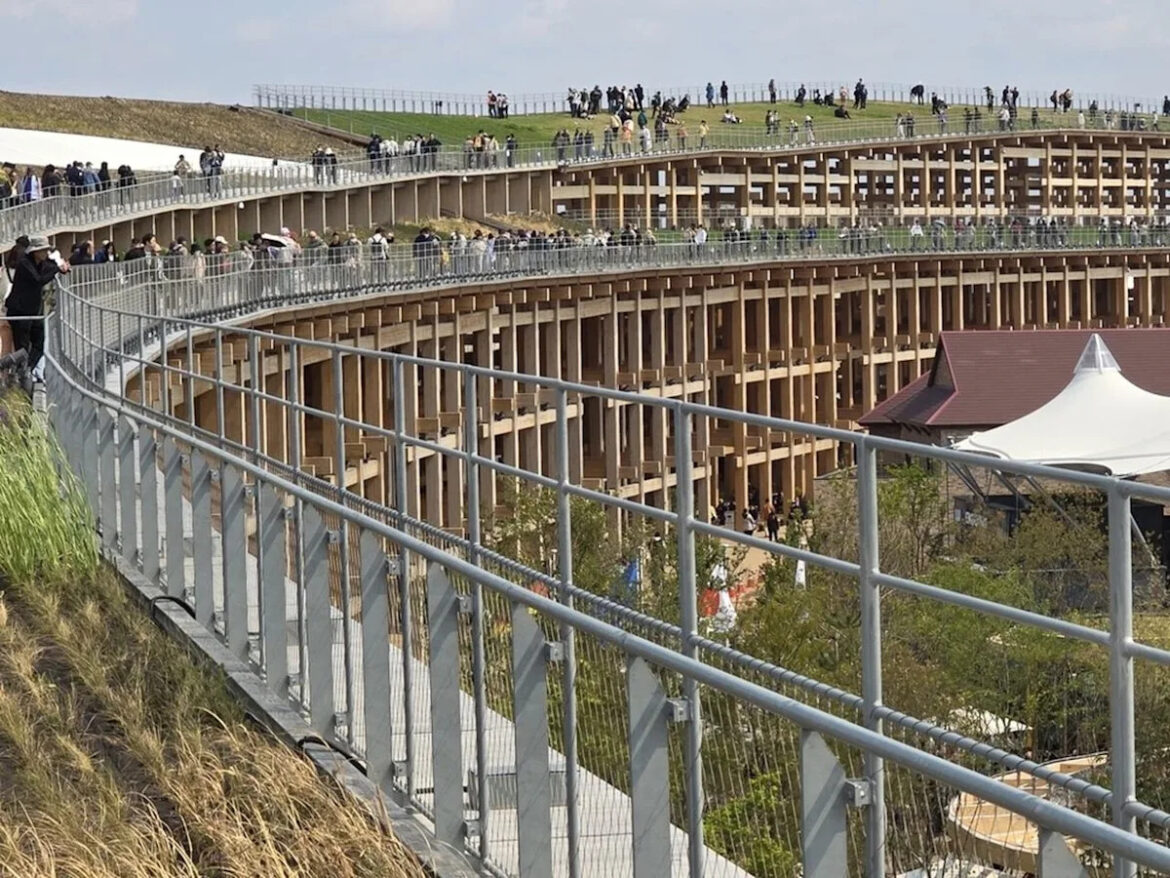What do an elevator, sewing machine, typewriter, telephone, dishwasher and mobile phone have in common?
They were all introduced to the public at International Expositions.
Industrialist Elisha Otis first demonstrated his elevator to the public at the 1854 Crystal Palace Exhibition in New York City. He famously cut the hoisting rope of the elevator platform to display its safety brake, which prevented it from falling.
The home sewing machine was first displayed at the Paris Exposition in 1855. The typewriter and Alexander Graham Bell’s telephone were first publicly displayed at the 1876 Centennial Exhibition in Philadelphia.
The dishwasher, as we know it, was first displayed at the 1893 World Columbian Exposition in Chicago.
Fifty-five years ago, visitors to Expo 1970 Osaka were delighted to discover ‘Dream Telephones’ at the Nippon Telegraph and Telephone (NTT) pavilion. Today we know them as mobile phones.
The first world exposition I attended was Montreal’s Expo 67, which featured a monorail passing through Buckminster Fuller’s geodesic dome and Moshe Safdie’s Habitat 67, comprised of stacked prefabricated concrete housing modules.
Like most Vancouverites, I have vivid memories of Expo 86. Although it was not a formally designated World Exposition, it celebrated Vancouver’s Centennial. We were encouraged to invite the world, and the world came. More than 22 million attended the fair.
Expo 86 gave us Canada Place, B.C. Place Stadium, SkyTrain, and established Vancouver as a global destination. Following 1986, Metro Vancouver’s annual population growth doubled from 1.5 per cent to three per cent. Whether it was for better or worse depends on who you talk to.

Visitors to the Canada Pavilion are handed augmented reality tablets and experience interactive exhibits that transform white interior icebergs into scenes from across Canada.
Since Expo 86, World Fairs have fascinated me since they offer a glimpse into the future. I have been fortunate to attend expositions in Lisbon, Shanghai, Yeosu, Dubai, and Astana.
Recently, I spent a week at Expo 2025 in Osaka, Japan. Osaka’s second world exposition opened on April 13 and occupies a 155-hectare site on a new man-made island, connected to the city by a new subway line extension. One hundred fifty-eight countries and regions, plus seven international organizations, are participating at this Expo. One notable absentee is Russia.
Every World Fair has a theme, and Expo 2025’s is “Designing Future Society for Our Lives.” There are three sub-themes: Saving Lives, Empowering Lives and Connecting Lives.
These sub-themes are intended to address aspects of human well-being, social inclusion and global interconnectedness.
The most striking feature of the Expo site is an impressive, multi-storey ‘grand ring,’ approximately two kilometres in circumference, constructed from mass timber. All the national pavilions are located within the ring to symbolize the need for international co-operation.
Some of the most popular and talked-about pavilions at Expo 2025 include the Japan Pavilion, Better Co-Being Pavilion, Future of Life Pavilion and Canada Pavilion.
The Japan Pavilion highlights Japan’s vision for a sustainable future. Its circular structure is designed to symbolize the cycle of life. Japanese initiatives and innovative technologies are showcased throughout the pavilion, including a biogas plant that utilizes food waste and carbon recycling technologies to promote sustainable practices.
The Better Co-Being Pavilion offers a speculative look at our future shaped by technological co-evolution. Located within the Forest of Tranquility, it embodies the transformation from a world focused on economic growth to one that places greater emphasis on the environment, health, human rights and education.
The Future of Life Pavilion focuses on human-robot coexistence and the potential for technologies, especially robotics and AI, to enhance and expand human life. The pavilion gives visitors the opportunity to encounter androids, robots, computer-generated characters and other avatars created with the latest technologies.
Upon first view, the Canada Pavilion’s white, geometric forms reinforce the overused cliché of Canada as the Great White North.
I was fortunate to have a chance encounter with Laurie Peters, commissioner-general for the pavilion, who was outside on the plaza during a false fire alarm. She told me the theme is not at all the Great White North. Rather, it is Regeneration.
Visitors will not read about this since words are not used anywhere in the pavilion. Instead, they are handed augmented reality tablets and experience interactive exhibits that transform white interior icebergs into scenes from across Canada.
After a week at the exposition, I became somewhat overwhelmed by all the technology. However, one of my favourite pavilions was the NTT pavilion, where the mobile phone was first showcased 55 years ago.
NTT’s 2025 pavilion is divided into three zones, each offering a unique interactive experience. Themed ‘Parallel Travel,’ the pavilion showcases how the future of communication will transcend physical distances and merge distant spaces into one shared reality.
The first zone offers a 180-degree audiovisual journey through the history of communication. You are then led into a 3D experience connecting the 1970 and 2025 expositions through holographic performances.
The pavilion concludes with a “time experiment” where visitors’ distorted portraits are displayed on a 360-degree screen. You soon realize that the younger visitors are made to look older, and the older visitors appear much younger. In my case, while all my wrinkles disappeared, I still had a bald head.
In addition to all the robots and androids, my favourite technological innovation at Expo was a Japanese toilet that can provide the user with regular health reports. This innovative toilet, developed by Toto, scans your stool to identify potential issues.
Expo 2025 will continue until Oct. 13, 2025. Unfortunately, there are often long lineups at most of the popular pavilions, so it is advisable to make reservations. Details on how to make reservations can be found on the website.
If you do attend Expo and there is a lengthy line at the Canadian pavilion, mention to a staff member that you are Canadian, and you will likely be directed to the fast-pass lane and get in immediately.
Although Osaka may seem like a long way away, I highly recommend a visit to Expo 2025. You will get a glimpse of the future and it is much more promising than you might expect.
Michael Geller FCIP, RPP, MLAI, Ret. Architect AIBC is a Vancouver-based planner and real estate consultant. He also serves on SFU’s adjunct faculty. You can reach him at geller@sfu.ca and find more information and images of Expo 2025 on his blog www.gellersworldtravel.blogspot.com.
Related


AloJapan.com